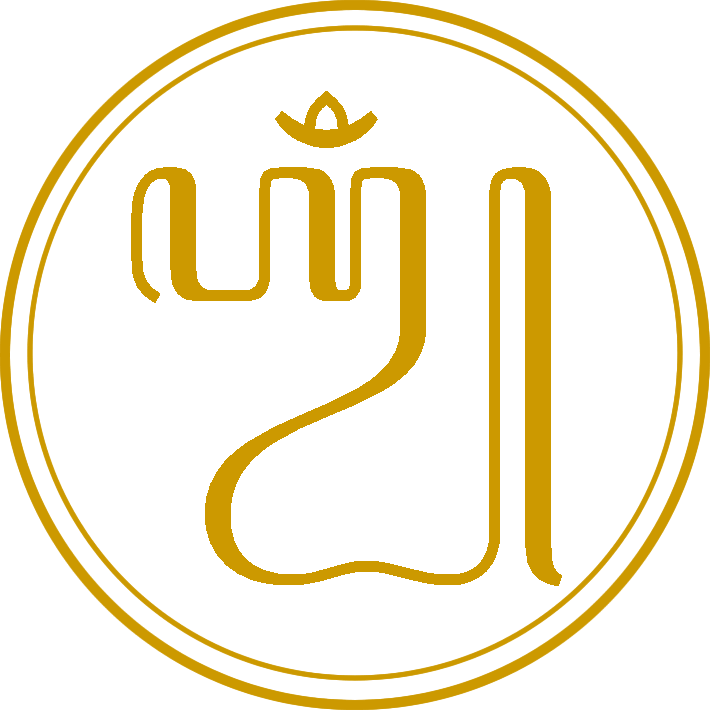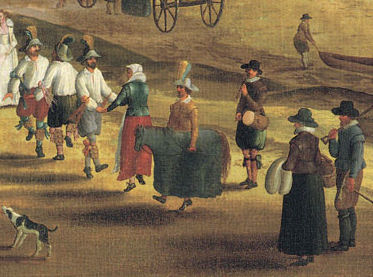|
Sanghyang
( ban, ᬲᬂᬳ᭄ᬬᬂ) is a traditional sacred Balinese dance originated from the Indonesian island of Bali, it is based on the premise that an unseen force enters the body of an entranced performer. The force, identified as ''hyang'', is an important type of spiritual entity in ancient Indonesian mythology. The ''sanghyang'' dances are considered sacred ritual dances and are performed exclusively at Balinese religious ceremonies. Variants ''Sanghyang bojog'' The dancer is a man dressed like a monkey (''bojog'') and accompanied by a chorus of chanting ''sanghyang''. Before it begins, the dancer goes through the phases of summoning ape spirits. After conceding, the dancer will jump into a tree and mimic the behavior of an ape. This dance is only found in Bugbug, Karangasem. ''Sanghyang celeng'' This is a ''sanghyang'' dance variant only found in Duda, Karangasem, danced by a man wearing palm fiber clothing. The dancer mimics the movements of a pig. ''Sanghyang ded ... [...More Info...] [...Related Items...] OR: [Wikipedia] [Google] [Baidu] |
Legong
Legong ( Balinese: ) is a form of Balinese dance. It is a refined dance form characterized by intricate finger movements, complicated footwork, and expressive gestures and facial expressions. Origins Legong probably originated in the 19th century as royal entertainment. Legend has it that a prince of Sukawati fell ill and had a vivid dream in which two maidens danced to gamelan music. When he recovered, he arranged for such dances to be performed in reality. Others believe that the Legong originated with the ''sanghyang dedari'', a ceremony involving voluntary possession of two little girls by beneficent spirits. Legong is also danced at public festivals. Excerpts from Legong dance dramas are put on for tourists. Dancers Traditionally, legong dancers were girls who have not yet reached puberty. They begin rigorous training from about the age of five. These dancers are regarded highly in the society and usually become wives of royal personages or wealthy merchants. After marriag ... [...More Info...] [...Related Items...] OR: [Wikipedia] [Google] [Baidu] |
Hyang
''Hyang'' ( Kawi, Sundanese, Javanese, and Balinese) is a representation of the Supreme Being, in ancient Java and Bali mythology. This spiritual entity can be either divine or ancestral. The reverence for this spiritual entity can be found in the folk religions of Java and Bali, such as the Sunda Wiwitan ( Sundanism or Cigugur Sundanism), Kejawen ( non-monotheistic Javanism), Kapitayan ( monotheistic Javanism), and Gama Tirta ( Balinism). The realm where ''Hyang'' resides is called the ''Kahyangan'', which is an Old Javanese term that literally means "the abode of ''Hyang''", "part of ''Hyang''", or "heaven". The Old Sundanese Manuscript Sanghyang Siksa Kandang Karesian, said ''Hyang'' is also written to mean Omnipotence, in the highest Sunda Wiwitan Spirituality ''Hyang'' this term is also ''Sang Hyang Kersa'' (the Powerful). Gama Tirta Balinism describes Hyang as a venerated spiritual existence that deserves special reverence. Hyang is commonly described as a sacred ... [...More Info...] [...Related Items...] OR: [Wikipedia] [Google] [Baidu] |
Kecak
''Kecak'' (pronounced ("kechak"), alternate spellings: ''kechak'' and ''ketjak''), known in Indonesian as ''tari kecakilolahhe'', is a form of Balinese Hindu dance and music drama that was developed in the 1930s in Bali, Indonesia. Since its creation, it has been performed primarily by men, with the first women's ''kecak'' group having started in 2006. The dance is based on the story of the ''Ramayana'' and is traditionally performed in temples and villages across Bali. Also known as the Ramayana monkey chant, the dance is performed by a circle of as many as 150 performers wearing checked cloths around their waists, percussively chanting "''chak''" and moving their hands and arms. The performance depicts a battle from the ''Ramayana'', in which the monkey-like Vanaras, led by Hanuman, help Prince Rama fight the evil King Ravana. ''Kecak'' has roots in ''sanghyang,'' a trance-inducing exorcism dance. History ''Kecak'' was originally a trance ritual accompanied by a male chor ... [...More Info...] [...Related Items...] OR: [Wikipedia] [Google] [Baidu] |
Legong
Legong ( Balinese: ) is a form of Balinese dance. It is a refined dance form characterized by intricate finger movements, complicated footwork, and expressive gestures and facial expressions. Origins Legong probably originated in the 19th century as royal entertainment. Legend has it that a prince of Sukawati fell ill and had a vivid dream in which two maidens danced to gamelan music. When he recovered, he arranged for such dances to be performed in reality. Others believe that the Legong originated with the ''sanghyang dedari'', a ceremony involving voluntary possession of two little girls by beneficent spirits. Legong is also danced at public festivals. Excerpts from Legong dance dramas are put on for tourists. Dancers Traditionally, legong dancers were girls who have not yet reached puberty. They begin rigorous training from about the age of five. These dancers are regarded highly in the society and usually become wives of royal personages or wealthy merchants. After marriag ... [...More Info...] [...Related Items...] OR: [Wikipedia] [Google] [Baidu] |
Barong (mythology)
Barong is a panther-like creature and character in the Balinese mythology of Bali, Indonesia. He is the king of the spirits, leader of the hosts of good, and enemy of Rangda, the demon queen and mother of all spirit guarders in the mythological traditions of Bali. The battle between Barong and Rangda is featured in the Barong dance to represent the eternal battle between good and evil. Origin Barong animal mask dance, together with ''sanghyang'' dance are considered native Balinese dances, predating Hindu influences. The native Indonesians of Austronesian heritage often have similar mask dances that represent either ancestral or natural spirits; an example is Dayak's ''Hudoq'' dance or any similar bear worship practice. The term ''barong'' is thought to have been derived from the local term ''bahruang'', which today corresponds to the Indonesian word ''beruang'' which means " bear". It refers to a good spirit, that took the form of an animal as the guardian of forest. In ... [...More Info...] [...Related Items...] OR: [Wikipedia] [Google] [Baidu] |
Footnotes
A note is a string of text placed at the bottom of a page in a book or document or at the end of a chapter, volume, or the whole text. The note can provide an author's comments on the main text or citations of a reference work in support of the text. Footnotes are notes at the foot of the page while endnotes are collected under a separate heading at the end of a chapter, volume, or entire work. Unlike footnotes, endnotes have the advantage of not affecting the layout of the main text, but may cause inconvenience to readers who have to move back and forth between the main text and the endnotes. In some editions of the Bible, notes are placed in a narrow column in the middle of each page between two columns of biblical text. Numbering and symbols In English, a footnote or endnote is normally flagged by a superscripted number immediately following that portion of the text the note references, each such footnote being numbered sequentially. Occasionally, a number between brack ... [...More Info...] [...Related Items...] OR: [Wikipedia] [Google] [Baidu] |
Ronggeng
Ronggeng ( jv, ꦫꦺꦴꦁꦒꦺꦁ, translit=ronggèng) is a type of Javanese dance in which couples exchange poetic verses as they dance to the music of a rebab or violin and a gong. Ronggeng might have originated from Java in Indonesia. Ronggeng probably has existed in Java since ancient time, the bas reliefs in Karmawibhanga section on eighth century Borobudur displays the scene of travelling entertainment troupe with musicians and female dancers. In Java, a traditional ronggeng performance features a traveling dance troupe that travels from village to village. The dance troop consists of one or several professional female dancers, accompanied by a group of musicians playing musical instruments: rebab and gong. The term "ronggeng" also applied for this female dancers. During a ronggeng performance, the female professional dancers are expected to invite some male audiences or clients to dance with them as a couple with the exchange of some tips money for the female dancer, giv ... [...More Info...] [...Related Items...] OR: [Wikipedia] [Google] [Baidu] |
Hobby Horse
The term "hobby horse" is used, principally by folklorists, to refer to the costumed characters that feature in some traditional seasonal customs, processions and similar observances around the world. They are particularly associated with May Day celebrations, mummers' plays and the Morris dance in England. Etymology The word ''hobby'' is glossed by the OED as "a small or middle-sized horse; an ambling or pacing horse; a pony." The word is attested in English from the 14th century, as Middle English ''hobyn''. Old French had ''hobin'' or ''haubby'', whence Modern French ''aubin'' and Italian ''ubino''. But the Old French term is apparently adopted from English rather than vice versa. OED connects it to "the by-name ''Hobin'', ''Hobby''", a variant of ''Robin''" (compare the abbreviation ''Hob'' for ''Robert''). This appears to have been a name customarily given to a cart-horse, as attested by White Kennett in his ''Parochial Antiquities '' (1695), who stated that "Our ploughm ... [...More Info...] [...Related Items...] OR: [Wikipedia] [Google] [Baidu] |
Ritual
A ritual is a sequence of activities involving gestures, words, actions, or objects, performed according to a set sequence. Rituals may be prescribed by the traditions of a community, including a religious community. Rituals are characterized, but not defined, by formalism, traditionalism, invariance, rule-governance, sacral symbolism, and performance. Rituals are a feature of all known human societies. They include not only the worship rites and sacraments of organized religions and cults, but also rites of passage, atonement and ritual purification, purification rites, oaths of allegiance, dedication ceremonies, coronations and presidential inaugurations, marriages, funerals and more. Even common actions like handshake, hand-shaking and saying "hello" may be termed as ''rituals''. The field of ritual studies has seen a number of conflicting definitions of the term. One given by Kyriakidis is that a ritual is an outsider's or "Emic and etic, etic" category for a set activity (o ... [...More Info...] [...Related Items...] OR: [Wikipedia] [Google] [Baidu] |
Karangasem Regency
Karangasem Regency (Indonesian: ''Kabupaten Karangasem'') is a regency (''kabupaten'') of Bali, Indonesia. It covers the east part of Bali, has an area of 839.54 km2 and had a population of 396,487 at the 2010 Census which rose to 492,402 at the 2020 Census. Its regency seat is the town of Amlapura. Karangasem was devastated when Mount Agung erupted in 1963, killing 1,900 people. Karangasem was a kingdom before Bali was conquered by the Dutch. Administrative districts The regency is divided into eight districts (''kecamatan''), tabulated below with their areas and population totals at the 2010 Census and the 2020 Census. The table also includes the number of administrative villages (rural ''desa'' and urban ''kelurahan'') in each district, and its postal codes. Note: (a) including 6 small offshore islands. Tourism Interesting places include: * The major Pura Besakih Hindu temple, sometimes called the Mother Temple of Besakih. * Mount Agung, the highest peak in ... [...More Info...] [...Related Items...] OR: [Wikipedia] [Google] [Baidu] |
Bugbug
Bugbug is an area of Karangasem Regency, Bali. Indonesia. It is located east of Candidasa Candi Dasa, or often Candidasa is a seaside town on the eastern cost of Bali that rests on the edge of a fresh water lagoon, named Candi Dasa Lagoon. The town is centred around ''Jalan Raya Candida'', where a number of hotels, restaurants, and s ... and its inhabitants celebrate the ''Perang Dawa'' (war of the gods) every other year at full moon of the fourth month (October). People from nearby villages then climb to the top of a hill and sacrifice pigs by hanging them in trees. A beach is hidden among two cliffs / hills, Bugbug Cliff and Prasi Cliff. References {{coord, 8.4833, S, 115.5833, E, source:wikidata, display=title Geography of Bali ... [...More Info...] [...Related Items...] OR: [Wikipedia] [Google] [Baidu] |






